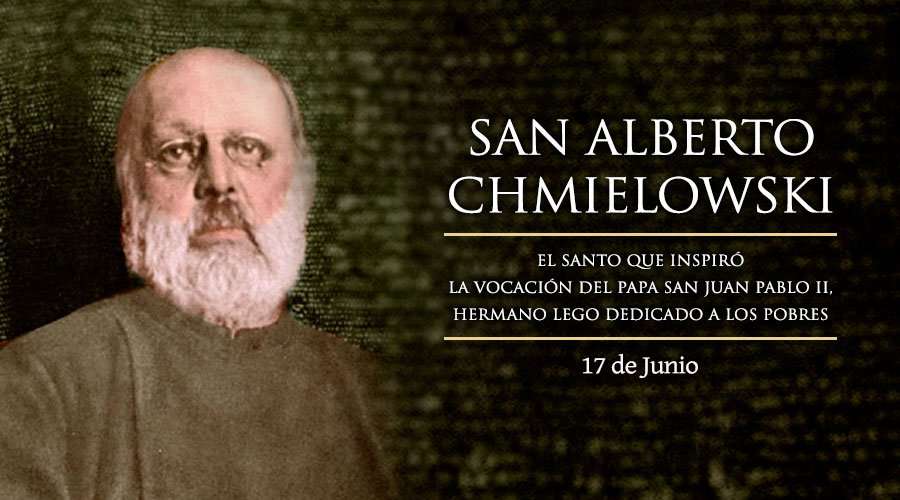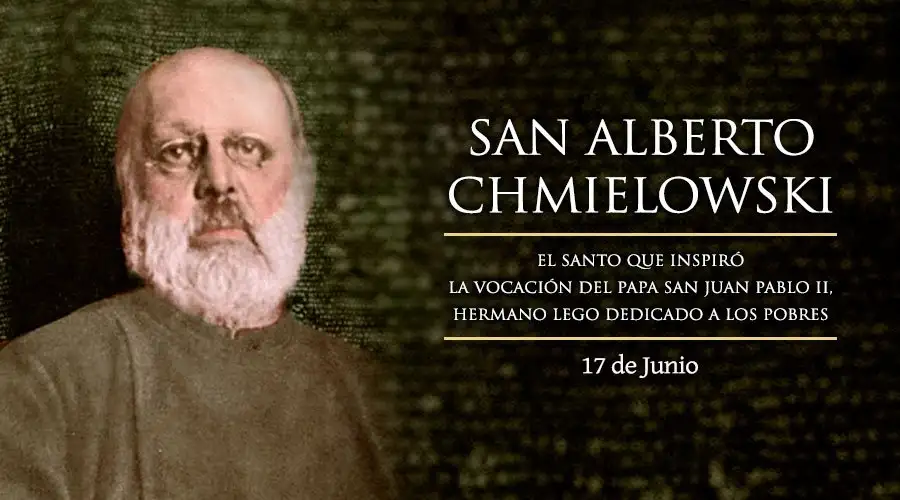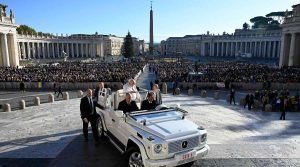Today we celebrate Saint Alberto Chmielowski, the artist who inspired Saint John Paul II




Every June 17, the Church celebrates Saint Albert Chmielowski, a Polish religious, whom many describe as “one of the most important saints of our time”. Alberto was a painter by profession, an artist who would later become a religious because of his immense desire to serve the Lord in his brothers. And, as if this were not enough, his testimony and spiritual figure became his greatest legacy: Antonio was the man who inspired the vocation of Pope Saint John Paul II, his most distinguished compatriot.
Saint Albert Chmielowski was also the founder of the Congregation of the Albertine Sisters Servants of the Poor – current name – and of the Brothers of the Third Order Regular of Saint Francis, Servants of the Poor, known as “Albertines”.
young patriot
Adan Hilario Bernardo Chmielowski was born in a small town in the Kingdom of Poland (at that time annexed to the Russian Empire) on August 20, 1845. Of aristocratic origin, he grew up in a climate in which patriotic ideals and love for whom were mixed. They suffered abandonment.
When he turned 18, he began to study agriculture and forestry resources. At that time he participated in the so-called “Insurrection of 1863” against the political and cultural “Russification” of Poland. He was seriously injured in one leg, which later had to be amputated. Chmielewski then decides to take refuge in Belgium, a country where he studied engineering and painting, leaving behind a career in agriculture. He then moves to Paris and then to Munich.
In 1873 an amnesty was decreed in Poland and Chmielewski undertook the return. In Poland he comes into contact with poverty and misery, gives up professional painting and engages in work helping the poor, sick and homeless. During those days he met Saint Raphael Kalinowski, who would be his spiritual director.
Man of God
In 1880, Chmielewski entered the Jesuit novitiate in the town of Stara Wies, but he did not last long there. He then decides to move to a public shelter for homeless people as a volunteer. In 1887 he applied to be admitted to the Third Order of Saint Francis and in 1888 he took religious vows, taking the name “Alberto”.
Brother Alberto becomes the organizer and manager of many charity works: asylums, shelters for the poorest, houses for mutilated and incurably sick. He sends the sisters of the congregation he founded to work in military hospitals; he opens several soup kitchens for the hungry and orphanages for homeless children and youth.
Holy
After a life of dedication, the saint died of stomach cancer in 1916, in Krakow, in the asylum that he himself founded in the city. He was beatified on June 22, 1983 by Pope Saint John Paul II, who also canonized him on November 12, 1989.
At the time of his death, Saint Albert left 21 houses for religious men and women in several countries, in which today they continue to serve the most needy.
Through the eyes of Saint John Paul II
At the canonization mass of St. Albert Chmielowski, Pope St. John Paul II said: “At the age of 17 (1863), as a student at the agricultural school, he participated in the insurrectionary struggle to free his homeland from the foreign yoke, and in that fight he suffered the mutilation of a leg. He sought the meaning of his vocation through artistic activity, leaving behind works that still impress today with a particular expressive capacity”.
The Polish Pope also recalled how a few years later, in 1874, when Alberto was already a mature artist, he decided to dedicate “his art, his talent and his aspirations to the glory of God”, turning his life around; becoming a servant of God. That inner transformation precipitated a change in his work, since religious themes began to predominate in his art.
art and christian life
It is true that Brother Alberto left professional activities related to art to dedicate his life to the service of the marginalized and forgotten. However, it is also true that he did not completely stop painting. Art can be liberating for the artist who wants to express himself through his work, as an excellent means to move the viewer and evangelize.
For example, one of the best paintings of the saint, entitled “Ecce Homo” (“Behold, the Man”, words with which Pilate presented Christ to the crowd), is the result of a deep experience of the merciful love of God. , a key experience in the spiritual transformation of St. Albert Chmielowski.







